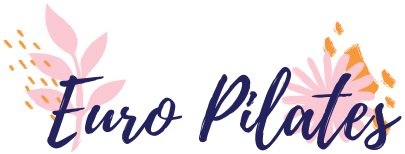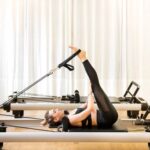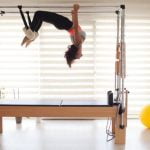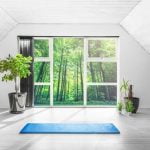Se hai mai sentito parlare del metodo Pilates, saprai che è un esercizio ammirato per la sua capacità di tonificare, allungare e rafforzare il corpo, ma potresti anche non sapere che ciò può essere reso ancora più coinvolgente attraverso immagini stilizzate. In questo articolo, esploreremo i benefici del Pilates e come queste immagini possono ispirare e motivare il tuo percorso di allenamento.
Pilates è un metodo di esercizio creato da Joseph Pilates agli inizi del 1900. La pratica è nata con il nome di “Contrology”, ma oggi è universalmente conosciuta come Pilates. Nel corso degli anni, il metodo Pilates è cresciuto e si è evoluto, adattandosi alle diverse esigenze e tendenze del fitness. Questo articolo ti fornirà una breve storia dell’origine del metodo Pilates e la sua evoluzione nel tempo.
Prima di immergerti nel mondo del Pilates, è importante capire i principi fondamentali del metodo. Questi principi sono alla base di ogni esercizio e ti aiuteranno a ottenere un corpo ben bilanciato e in salute. Attraverso spiegazioni chiare e immagini stilizzate, esploreremo i principi chiave del Pilates in modo da poter comprendere al meglio come lavora sul tuo corpo.
Quando si parla di Pilates, è impossibile non menzionare l’importanza di un core forte. Questa sezione si concentra sul modo in cui il Pilates mira ai tuoi muscoli addominali e come ti aiuta a scolpire e tonificare questa area. Con immagini stilizzate e spiegazioni dettagliate degli esercizi, scoprirai come il Pilates può essere un allenamento efficace per il tuo core.
Attraverso una serie di esercizi mirati, il Pilates ti aiuta a rafforzare e allungare tutto il corpo, ottenendo una forma fisica snella e flessibile. In questa sezione, esploreremo una varietà di esercizi Pilates che mirano a tonificare e allungare il tuo corpo. Le immagini stilizzate ti mostreranno come eseguire correttamente gli esercizi e ti ispireranno a raggiungere nuovi traguardi nella tua pratica di Pilates.
Un aspetto del Pilates spesso trascurato è la sua connessione mente-corpo. Il metodo Pilates promuove la consapevolezza del corpo e incoraggia il benessere mentale ed emotivo. In questa sezione, esploreremo in dettaglio i benefici mentali ed emotivi del praticare Pilates e come le immagini stilizzate possono contribuire a rafforzare la tua connessione mente-corpo.
The Origins of Pilates
Il metodo Pilates è stato sviluppato negli anni ’20 del XX secolo da Joseph Pilates. Nato in Germania nel 1883, Pilates ha dedicato la sua vita allo studio del movimento e del benessere fisico.
Durante la sua giovinezza, ha lottato con diverse malattie e disabilità, ma è stato determinato a trovare un modo per rafforzare il suo corpo e migliorare la sua salute complessiva. Questo lo ha portato a sviluppare un sistema di esercizi unico che si concentra sul controllo, la precisione e la consapevolezza del movimento.
La prima forma del metodo Pilates è stata chiamata “Controlology” ed è stata originariamente utilizzata come forma di riabilitazione per i soldati feriti durante la prima guerra mondiale. Pilates ha aperto il suo primo studio a New York nel 1926 e ha lavorato principalmente con ballerini professionisti, aiutandoli a prevenire infortuni e migliorare le loro performance. Nel corso degli anni, il metodo Pilates ha guadagnato sempre più popolarità e si è diffuso in tutto il mondo.
Da allora, il metodo Pilates è stato adattato ed evoluto da diversi insegnanti e professionisti del fitness. Sono state introdotte nuove varianti e modifiche per soddisfare le esigenze e i livelli di fitness di persone di tutte le età e condizioni fisiche. Oggi, esistono diverse scuole di pensiero all’interno del metodo Pilates, ma tutte si basano sui principi fondamentali stabiliti da Joseph Pilates.
Nel corso degli anni, il metodo Pilates è stato riconosciuto come un approccio efficace per migliorare la forza muscolare, la flessibilità, l’equilibrio e la postura. La sua popolarità è testimoniata dalla presenza di numerosi studi di Pilates in tutto il mondo.
Con l’uso di apparecchiature specializzate e il focus sulla forma e la consapevolezza del movimento, il metodo Pilates offre un’alternativa unica ai tradizionali allenamenti di forza e cardio. Con una storia ricca e una continua evoluzione, il metodo Pilates continua ad essere una forma di esercizio ampiamente praticata e apprezzata da molte persone.
Key Principles of Pilates
Le principali cose da tenere a mente quando si pratica Pilates sono i principi fondamentali che costituiscono la base di questo metodo di esercizio. Questi principi sono essenziali per ottenere una forma fisica equilibrata e una corretta esecuzione degli esercizi. I principi si basano sull’allineamento, la concentrazione, il controllo, la respirazione, la precisione e il flusso.
L’allineamento è fondamentale per una corretta esecuzione degli esercizi, poiché garantisce che il corpo sia in una posizione ottimale per lavorare in modo efficiente. L’attenzione alla postura e all’allineamento del corpo permette di lavorare sui muscoli giusti e di evitare lesioni.
La concentrazione è un altro principio chiave del Pilates. Per ottenere i massimi benefici, è importante concentrarsi su ogni movimento e sul coinvolgimento dei muscoli specifici. La mente deve essere presente nel momento presente durante l’intera sessione di Pilates per ottenere una connessione più profonda con il proprio corpo.
Il controllo è un elemento essenziale del Pilates. Ogni movimento deve essere controllato e preciso, senza sforzi eccessivi o movimenti bruschi. Il controllo permette di lavorare sui muscoli in modo più efficace e di ottenere una maggiore consapevolezza del proprio corpo.
La respirazione è un elemento fondamentale nel Pilates. Una corretta respirazione permette un flusso costante di ossigeno durante gli esercizi, aiutando a mantenere una buona postura e a evitare tensioni muscolari. La respirazione viene utilizzata anche per aumentare la consapevolezza e concentrarsi sul proprio corpo durante gli esercizi.
Questi principi fondamentali del Pilates lavorano tutti insieme per creare un corpo ben equilibrato. Seguendo questi principi, è possibile ottenere una maggiore forza, flessibilità e stabilità nel corpo. Con una pratica costante, il Pilates può contribuire a migliorare la postura, ridurre il dolore cronico e aumentare l’energia complessiva.
Sculpting Your Core
Pilates is renowned for its ability to sculpt and tone the core, particularly the abdominal muscles. This section will delve into how Pilates specifically targets and shapes the core, providing a detailed understanding of the exercises and techniques used.
One of the key principles of Pilates is focusing on the deep muscles of the abdomen, also known as the powerhouse. These muscles, including the transverse abdominis and pelvic floor muscles, are essential for a strong core and proper body alignment. Pilates exercises, such as the Hundred, the Roll-Up, and the Teaser, specifically target these muscles, helping to strengthen and tone them for a flatter and more defined midsection.
Another aspect of Pilates that contributes to core development is its emphasis on control and precision. Unlike traditional core exercises, Pilates movements are slow and deliberate, requiring concentration and coordination. By performing exercises with control and precision, you engage the deep core muscles more effectively, promoting better muscle activation and engagement.
In addition to targeting the core muscles directly, Pilates also works the surrounding muscles that support and stabilize the core. This includes the muscles of the back, hips, and buttocks, which all play a crucial role in maintaining a strong and stable core. By strengthening these muscles, Pilates helps to create a balanced and well-supported core, reducing the risk of injury and improving overall posture.
Overall, Pilates offers a comprehensive approach to sculpting and toning the core. By targeting the deep abdominal muscles, focusing on control and precision, and working the surrounding stabilizing muscles, Pilates provides a highly effective workout for strengthening and shaping the core. Whether you’re looking to flatten your abs, improve your posture, or enhance your overall fitness, Pilates is an excellent choice for achieving a strong and toned midsection.
| Benefits of Pilates Core Sculpting | Data |
|---|---|
| Strengthens deep abdominal muscles | Yes |
| Improves muscle control and precision | Yes |
| Targets surrounding stabilizing muscles | Yes |
| Reduces risk of injury and improves posture | Yes |
Strengthening and Lengthening
Pilates is renowned for its ability to sculpt and tone the body, particularly the core muscles. This section will explore some of the key exercises in Pilates that target the abdominal muscles and contribute to a lean and flexible body.
The Hundred
One of the most iconic Pilates exercises, the Hundred is a fantastic way to engage the abdominal muscles and increase core strength. To perform this exercise, lie on your back with your knees bent and feet flat on the ground. Lift your head, neck, and shoulders off the mat, engage your abdominal muscles, and extend your legs out at a 45-degree angle.
Pump your arms up and down by your sides, inhaling for five counts and exhaling for five counts. Repeat this for ten breaths, aiming to reach 100 arm pumps in total.
Pilates Roll Up
The Pilates Roll Up is a challenging exercise that not only strengthens the abdominals but also improves spinal flexibility. Start by lying flat on your back with your legs extended and arms reaching overhead. Inhale to prepare, then exhale as you engage your core and roll up, sequentially articulating your spine one vertebra at a time.
Reach towards your toes with your arms, then slowly roll back down to the starting position. Focus on maintaining control throughout the movement and avoid any jerking or momentum.
Single-Leg Stretch
The Single-Leg Stretch is a Pilates exercise that targets the deep abdominal muscles, known as the transverse abdominis. Begin by lying on your back with your knees bent and shins parallel to the floor. Bring one knee towards your chest, holding onto the shin with both hands, and extend the opposite leg out at a 45-degree angle.
As you exhale, switch legs, bringing the opposite knee in while simultaneously extending the other leg out. Keep your core engaged throughout the exercise and focus on maintaining a steady breathing pattern.
By incorporating these and other Pilates exercises into your fitness routine, you can strengthen your core, tone your muscles, and improve flexibility. Remember to always practice proper form and alignment and listen to your body’s limits to prevent any injuries. With consistency and dedication, Pilates can help you achieve a lean and flexible body.
Mind-Body Connection
Enhanced Concentration and Mindfulness
One of the key principles of Pilates is the focus on concentration and mindfulness. During a Pilates session, practitioners are encouraged to be fully present in the movements and to be aware of their body’s alignment and energy. This mind-body connection not only improves physical performance but also enhances mental clarity and concentration. By focusing on each movement and breath, Pilates allows individuals to find a sense of calm and release from the stresses of daily life.
Stress Reduction and Emotional Well-being
Pilates is often recognized for its ability to reduce stress and promote emotional well-being. The deep breathing techniques used in Pilates help to activate the body’s relaxation response, reducing levels of stress hormones such as cortisol.
Additionally, the flowing movements and gentle stretches of Pilates release tension in the muscles and increase the production of endorphins, the body’s natural mood-boosting hormones. Regular Pilates practice can help individuals manage stress, improve sleep, and enhance overall emotional well-being.
Body Awareness and Self-Confidence
Pilates promotes body awareness and helps individuals develop a positive relationship with their bodies. Through the precise movements and emphasis on alignment, practitioners become more attuned to their body’s strengths, weaknesses, and imbalances. This increased awareness allows individuals to make conscious adjustments in their movements and posture, ultimately improving their overall body mechanics.
As individuals gain strength and flexibility through Pilates, their self-confidence naturally increases, leading to a positive body image and improved self-esteem. Additionally, the mind-body connection fostered in Pilates helps individuals develop a sense of trust and respect for their bodies, further contributing to a healthy self-image.
Pilates Equipment
Pilates is a versatile exercise method that can be done with or without equipment. However, using specialized apparatus can add an extra level of challenge and variety to your Pilates routine. In this section, we will explore the different types of equipment commonly used in Pilates studios, and how they can enhance your workout.
- Reformer: The reformer is perhaps the most popular and versatile piece of Pilates equipment. It consists of a sliding carriage, equipped with springs and straps, that allows for resistance and assistance during exercises.
The reformer can be adjusted to accommodate different body sizes and fitness levels, making it suitable for beginners and advanced practitioners alike. It offers a wide range of exercises that target different muscle groups, providing a full-body workout that improves strength, flexibility, and posture. - Cadillac: The Cadillac, also known as the trapeze table, is a comprehensive piece of equipment that offers a multitude of exercises. It features a bed-like structure with a variety of bars, springs, and straps, allowing for a wide range of movements and positions. The Cadillac is particularly beneficial for challenging core stability and improving flexibility. It can also be used for rehabilitative purposes, as it provides support and assistance during exercises.
- Chair: The Pilates chair, or Wunda chair, is a compact piece of equipment that targets the core, legs, and arms. It consists of a padded seat with attached springs and pedals, which can be adjusted for different resistance levels.
The chair offers a variety of movements, including standing exercises and seated exercises, that challenge balance, coordination, and strength. It is particularly effective for targeting the muscles of the lower body, such as the glutes, quadriceps, and hamstrings.
By incorporating Pilates equipment into your workouts, you can take your practice to the next level and experience new challenges and benefits. Whether you choose to use the reformer, Cadillac, chair, or other apparatus, each piece offers unique exercises and variations that can help you achieve a more well-rounded and challenging Pilates routine.
So, if you’re looking to add some excitement and variety to your workouts, consider trying out the different equipment options available at your local Pilates studio.
Finding Your Pilates Studio
Choosing the right Pilates studio and instructor is essential for a successful and enjoyable workout experience. With the growing popularity of Pilates, there are countless studios and instructors to choose from, each offering their own unique style and atmosphere. In this section, we will explore some tips and considerations to keep in mind when finding the perfect Pilates studio for you.
First and foremost, it is important to consider the environment of the studio. Look for a space that is clean, well-maintained, and inviting. A Pilates studio should have ample natural light, good ventilation, and a peaceful ambiance to create a calming and enjoyable atmosphere for your practice. Additionally, consider the amenities available, such as changing rooms, showers, and parking, to ensure convenience and comfort during your visits.
Next, consider the qualifications and experience of the instructors at the studio. A highly trained and qualified instructor is crucial in order to receive proper guidance and to avoid potential injuries. Look for instructors who have completed comprehensive Pilates certification programs and who have years of teaching experience. It can also be helpful to read reviews or ask for recommendations from others who have worked with a particular instructor or studio to gain insight into their teaching styles and expertise.
Another important factor to consider is the class schedule and variety of classes offered. Pilates is a versatile exercise method that encompasses a range of exercises and equipment. Look for a studio that offers a variety of classes and levels, from beginner to advanced, to ensure that you can progress and challenge yourself as you become more experienced. Additionally, consider the availability of classes at convenient times that align with your schedule.
Lastly, take the time to visit potential Pilates studios and observe a class or take a trial class if possible. This will give you a firsthand experience of the studio’s atmosphere, teaching style, and the equipment they use.
Pay attention to the instructor’s communication style, attentiveness to students, and ability to provide modifications and adjustments when necessary. Ultimately, finding a Pilates studio that aligns with your preferences and goals will enhance your overall Pilates experience and keep you motivated on your journey.
In conclusion, finding the right Pilates studio and instructor is crucial for a successful and enjoyable workout experience. Consider the environment of the studio, the qualifications and experience of the instructors, the class schedule and variety of classes offered, and take the time to visit potential studios before making a decision. By following these tips, you can ensure that you find a Pilates studio that provides a supportive and inspiring environment for your Pilates journey.
Pilates and Beyond
In the ever-evolving world of fitness, Pilates continues to adapt and incorporate new trends and variations to keep exercisers engaged and challenged. Pilates and Beyond explores the innovative approaches that have emerged in recent years, allowing individuals to take their Pilates practice to new heights.
One notable trend in the world of Pilates is the integration of technology. With the rise of wearable devices and fitness apps, Pilates enthusiasts now have access to virtual classes, personalized workouts, and real-time feedback on their form and performance. These technological advancements offer a convenient and interactive way to enhance one’s Pilates experience, whether at home or in a studio setting.
Another exciting development in the world of Pilates is the fusion of different exercise modalities. Piloxing, for example, combines Pilates movements with high-intensity boxing-inspired moves, creating a dynamic and energetic workout.
Other variations, such as Yoga-lates and Barre-lates, incorporate elements of yoga and ballet, respectively, to add variety and challenge to traditional Pilates exercises. These cross-discipline approaches not only keep participants engaged but also provide a well-rounded workout that targets different muscle groups and enhances overall fitness.
As more people recognize the benefits of Pilates, the accessibility and inclusivity of the practice have also expanded. Adaptive Pilates, for instance, caters to individuals with physical disabilities or limitations, offering modified exercises and specialized equipment to accommodate their unique needs.
In addition, Pilates for Seniors classes focus on gentle movements and modifications suitable for older adults, promoting strength, balance, and flexibility. These inclusive approaches make Pilates accessible to a wider range of individuals, ensuring that everyone can experience the transformative benefits of this exercise method.
In conclusion, Pilates and Beyond showcases the continuous evolution and innovation within the Pilates world. By staying abreast of the latest trends and variations, individuals can customize their Pilates practice to suit their preferences and goals.
Whether through technology integration, fusion with other exercise modalities, or inclusive adaptations, the possibilities for enhancing one’s Pilates journey are limitless. By embracing these innovative approaches, individuals can take their Pilates practice to new heights and enjoy the lifelong benefits of a strong, flexible, and balanced body.
Visualizing Your Pilates Journey
Sezione Conclusiva:
Le immagini stilizzate possono giocare un ruolo fondamentale nel isualizzare il tuo percorso di Pilates e fornirti l’ispirazione e la motivazione necessarie. Quando cerchiamo di raggiungere i nostri obiettivi di fitness, una delle sfide più comuni è mantenere la motivazione costante nel lungo termine. L’utilizzo di immagini stilizzate può aiutarti a visualizzare i risultati che desideri ottenere e a mantenerli vividi nella tua mente.
La bellezza delle immagini stilizzate è che possono essere create in modo personalizzato per adattarsi ai tuoi obiettivi specifici. Puoi rappresentare le parti del tuo corpo che desideri tonificare e rafforzare, o immagini che ti ricordano la grazia e la flessibilità che desideri raggiungere. Queste immagini possono essere un potente strumento di visualizzazione, che ti aiuta a focalizzarti sulla tua pratica di Pilates e a mantenere un atteggiamento positivo e motivato.
Le immagini stilizzate possono anche ispirare la tua creatività e metterti al passo con le ultime tendenze e varianti nel mondo del Pilates. Puoi creare collage o moodboard con immagini che ti ispirano e riflettono le tue aspirazioni nel mondo del fitness. Inoltre, puoi utilizzare le immagini per scoprire nuovi esercizi o varianti che potrebbero interessarti. Le immagini possono aprire nuove prospettive e portarti a sperimentare con nuove sfide nel tuo allenamento di Pilates.
In conclusione, le immagini stilizzate possono essere uno strumento prezioso per visualizzare il tuo percorso di Pilates. Queste immagini possono ispirarti e motivarti mentre lavori per raggiungere i tuoi obiettivi di fitness.
Puoi utilizzare creativamente le immagini per mantenere vividi i tuoi obiettivi, esplorare nuove tendenze nel mondo del Pilates e alimentare la tua passione per questa forma di esercizio. Sia che tu preferisca le immagini stilizzate o immagini reali, ciò che conta è che queste immagini ti aiutino a visualizzare la tua pratica di Pilates e a mantenere la tua motivazione nel lungo termine.
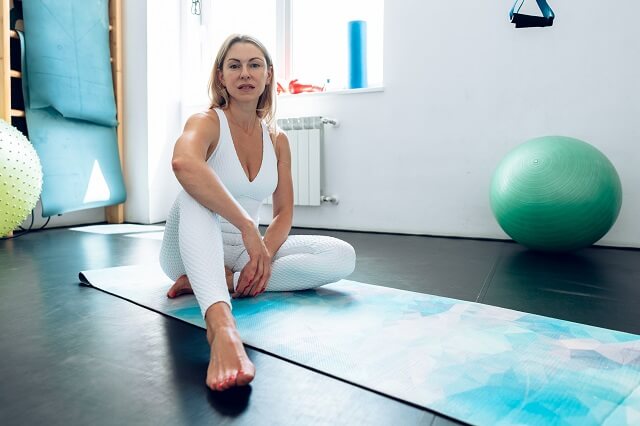
Il mio obiettivo con Euro Pilates è condividere informazioni di qualità sul Pilates, fornire consigli pratici per migliorare la vostra salute e il vostro benessere, e ispirarvi a vivere una vita attiva e equilibrata. Il Pilates è adatto a persone di tutte le età e livelli di fitness, ed è una scelta eccellente per coloro che cercano un modo gentile ma efficace per raggiungere i loro obiettivi di salute e forma fisica.
